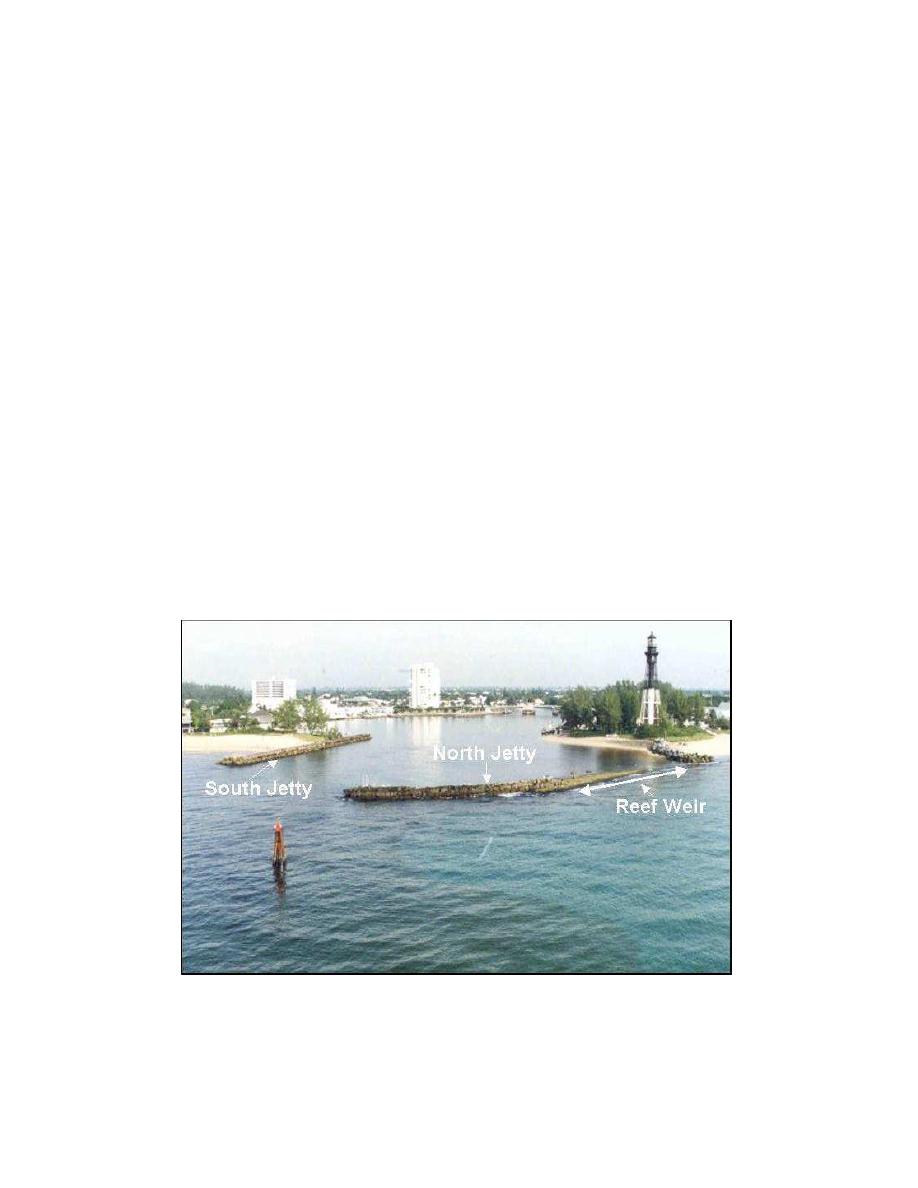
January 13, 2004
14:36
WSPC/101-CEJ
00094
541
Progress in Management of Sediment Bypassing at Coastal Inlets
3.1. Field examples of weir jetty projects
This section describes the weir jetties and their performance at selected coastal
inlets.
3.1.1. Hillsboro Inlet, Florida
Hillsboro Inlet is a natural inlet about 610 m long that had a channel shoaling
problem causing navigational difficulty. In 1930, a granite rock jetty was constructed,
projecting 79 m southeast from the north shore to an existing rock reef formation.
This natural reef varied in elevation from +0.1 m to +1.1 m relative to the mean-
low-water datum (tide range about 0.8 metre). In 1952, a 152 m long timber jetty
was built on the south side of the channel. A 69 m long breakwater extension was
built on the north side of the inlet in 1965. This framed in a weir section, 79 m
long (elevation +0.1 m to +1.1 m mlw) between the original jetty and the extension
structure (see Fig. 5). This natural weir provided a means for sand to pass into
the inlet deposition basin, thus making it the prototype for the weir-jetty concept
(Weggel, 1981). Predominant littoral drift is toward the weir, from north to south
(University of Florida, 1965). After completing the jetty improvements, the inlet
channel was deepened to improve navigation. The deepening included a cut through
the existing rock at the mouth of the inlet to a depth of approximately 3.0 m below
mean sea level and width of 53 m between the jetties. All inlet improvements were
Fig. 5. Hillsboro Inlet, Florida, was the first sand-bypassing weir jetty system. The design incor-
porated a natural reef formation for the weir.
Figure 5. Hillsboro Inlet, Florida, was the first sand-bypassing weir jetty system. The
design incorporated a natural reef formation for the weir.




 Previous Page
Previous Page
